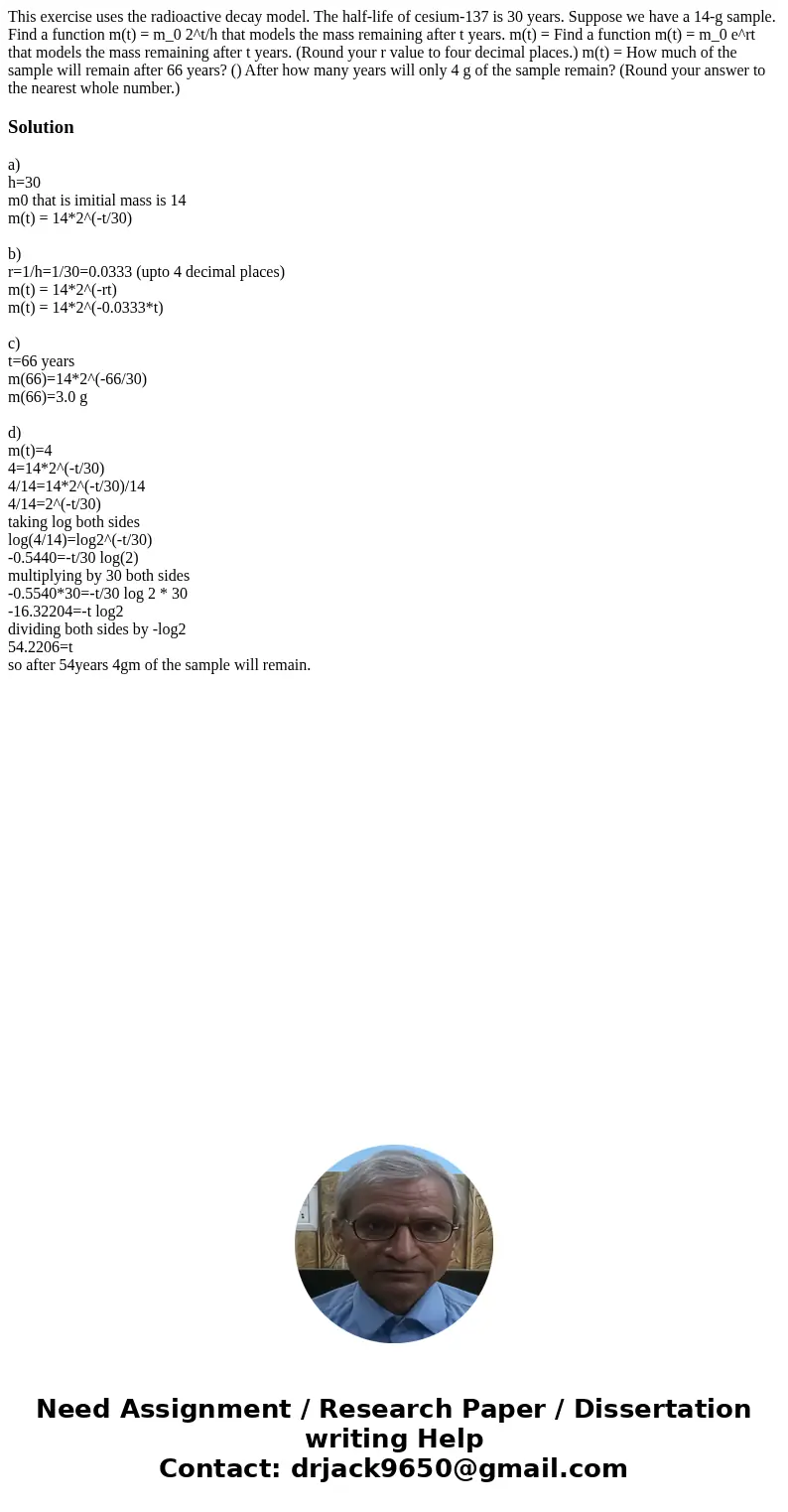This exercise uses the radioactive decay model The halflife
This exercise uses the radioactive decay model. The half-life of cesium-137 is 30 years. Suppose we have a 14-g sample. Find a function m(t) = m_0 2^t/h that models the mass remaining after t years. m(t) = Find a function m(t) = m_0 e^rt that models the mass remaining after t years. (Round your r value to four decimal places.) m(t) = How much of the sample will remain after 66 years? () After how many years will only 4 g of the sample remain? (Round your answer to the nearest whole number.) 
Solution
a)
h=30
m0 that is imitial mass is 14
m(t) = 14*2^(-t/30)
b)
r=1/h=1/30=0.0333 (upto 4 decimal places)
m(t) = 14*2^(-rt)
m(t) = 14*2^(-0.0333*t)
c)
t=66 years
m(66)=14*2^(-66/30)
m(66)=3.0 g
d)
m(t)=4
4=14*2^(-t/30)
4/14=14*2^(-t/30)/14
4/14=2^(-t/30)
taking log both sides
log(4/14)=log2^(-t/30)
-0.5440=-t/30 log(2)
multiplying by 30 both sides
-0.5540*30=-t/30 log 2 * 30
-16.32204=-t log2
dividing both sides by -log2
54.2206=t
so after 54years 4gm of the sample will remain.

 Homework Sourse
Homework Sourse